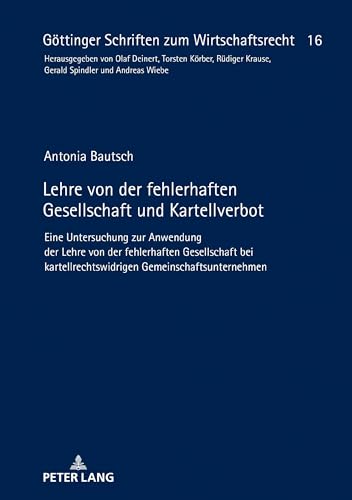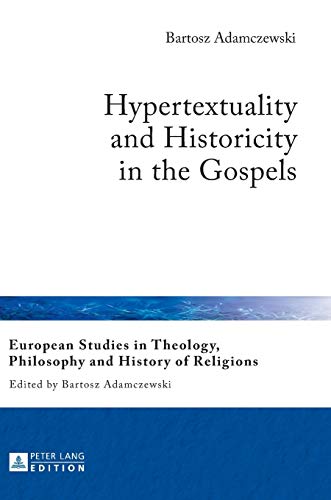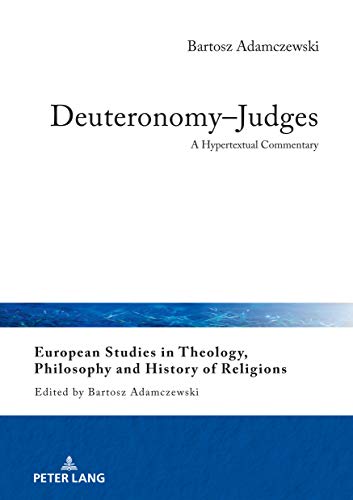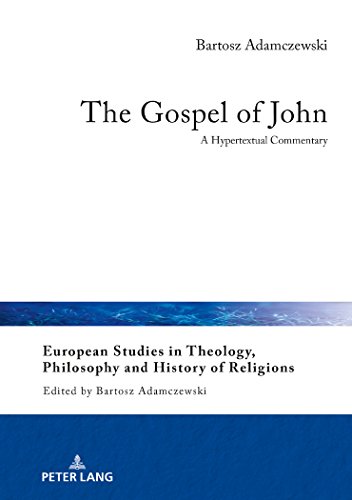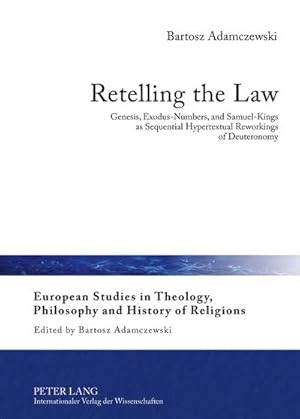Bartosz Adamczewski (189 results)
FeedbackSearch filters
Product Type
- All Product Types
- Books (189)
- Magazines & Periodicals (No further results match this refinement)
- Comics (No further results match this refinement)
- Sheet Music (No further results match this refinement)
- Art, Prints & Posters (No further results match this refinement)
- Photographs (No further results match this refinement)
- Maps (No further results match this refinement)
- Manuscripts & Paper Collectibles (No further results match this refinement)
Condition Learn more
- New (153)
- As New, Fine or Near Fine (32)
- Very Good or Good (2)
- Fair or Poor (No further results match this refinement)
- As Described (2)
Binding
Collectible Attributes
- First Edition (3)
- Signed (No further results match this refinement)
- Dust Jacket (No further results match this refinement)
- Seller-Supplied Images (111)
- Not Print on Demand (154)
Language (2)
Free Shipping
Seller Location
Seller Rating
-
The Gospel of Matthew: A Hypertextual Commentary (European Studies in Theology, Philosophy and History of Religions)
Published by Peter Lang GmbH, Internationaler Verlag der Wissenschaften, 2017
ISBN 10: 3631679416 ISBN 13: 9783631679418
Language: English
Seller: Powell's Bookstores Chicago, ABAA, Chicago, IL, U.S.A.
Condition: Used - Very Good. 2017. Hardcover. Cloth, no dj. Slight shelf-wear, otherwise very good. Very Good.
More buying choices from other sellers on AbeBooks
New offers from £ 66.50
Used offers from £ 28.78
Also find Hardcover
-
The Gospel of Luke: A Hypertextual Commentary (European Studies in Theology, Philosophy and History of Religions)
Published by Peter Lang GmbH, Internationaler, 2016
ISBN 10: 3631667205 ISBN 13: 9783631667200
Language: English
Seller: Midtown Scholar Bookstore, Harrisburg, PA, U.S.A.
hardcover. Condition: Very Good. no dust jacket as issued No dust jacket. Very Good hardcover with light shelfwear - NICE! Standard-sized.
More buying choices from other sellers on AbeBooks
New offers from £ 60.31
Used offers from £ 35.87
Also find Hardcover
-
£ 36.88
Convert currency£ 4.16 shipping from United Kingdom to U.S.A.Quantity: 15 available
Add to basketHRD. Condition: New. New Book. Shipped from UK. Established seller since 2000.
More buying choices from other sellers on AbeBooks
New offers from £ 41.04
Used offers from £ 45.80
Also find Hardcover
-
Heirs of the Reunited Church: The History of the Pauline Mission in Paul's Letters, in the So-Called Pastoral Letters, and in the Pseudo-Titus Narrative of Acts
Published by Peter Lang, Frankfurt, 2010
ISBN 10: 3631605048 ISBN 13: 9783631605042
Language: English
Seller: Friends of the Salem Public Library, Salem, OR, U.S.A.
Hardcover. Condition: As New. No Jacket. Edition not stated. Assumed first, 2010. 8vo. 178 pages. Bibliography. Index of Ancient Sources. Cased in paper-covered boards. No dust jacket. No signs of previous ownership. Not a library discard. A pristine copy in as-new condition. Size: 8vo - over 7¾" - 9¾" tall.
More buying choices from other sellers on AbeBooks
New offers from £ 81.38
Used offers from £ 42.42
Also find Hardcover
-
£ 38.41
Convert currency£ 4.16 shipping from United Kingdom to U.S.A.Quantity: 15 available
Add to basketHRD. Condition: New. New Book. Shipped from UK. Established seller since 2000.
More buying choices from other sellers on AbeBooks
New offers from £ 42.57
Used offers from £ 112.99
Also find Hardcover
-
SamuelKings
Published by Peter Lang AG, 2021
ISBN 10: 3631852045 ISBN 13: 9783631852040
Seller: PBShop.store UK, Fairford, GLOS, United Kingdom
£ 40.53
Convert currency£ 4.16 shipping from United Kingdom to U.S.A.Quantity: 15 available
Add to basketHRD. Condition: New. New Book. Shipped from UK. Established seller since 2000.
More buying choices from other sellers on AbeBooks
New offers from £ 44.69
Used offers from £ 50.42
Also find Hardcover
-
Constructing Relationships, Constructing Faces : Hypertextuality and Ethopoeia in the New Testament Writings
Published by Peter Lang GmbH, Internationaler Verlag der Wissenschaften, 2011
ISBN 10: 3631614829 ISBN 13: 9783631614822
Language: English
Seller: GreatBookPrices, Columbia, MD, U.S.A.
Condition: As New. Unread book in perfect condition.
More buying choices from other sellers on AbeBooks
New offers from £ 53.23
Used offers from £ 48.90
Also find Hardcover
-
Hebrews and Revelation
Published by Peter Lang GmbH, Internationaler Verlag der Wissenschaften, 2025
ISBN 10: 363193288X ISBN 13: 9783631932889
Language: English
Seller: PBShop.store UK, Fairford, GLOS, United Kingdom
£ 43.67
Convert currency£ 4.16 shipping from United Kingdom to U.S.A.Quantity: 15 available
Add to basketHRD. Condition: New. New Book. Shipped from UK. Established seller since 2000.
-
Origin of the Feast of the Nativity in the Patristic Perspective
Seller: GreatBookPrices, Columbia, MD, U.S.A.
Condition: New.
More buying choices from other sellers on AbeBooks
New offers from £ 50.55
Used offers from £ 56.16
Also find Hardcover
-
Analogy in Modern Scholasticism : A Study of Francisco Suárez's Metaphysics
Seller: GreatBookPrices, Columbia, MD, U.S.A.
Condition: New.
More buying choices from other sellers on AbeBooks
New offers from £ 50.55
Used offers from £ 52.32
Also find Hardcover
-
ExodusNumbers
Published by Peter Lang AG, 2020
ISBN 10: 3631833547 ISBN 13: 9783631833544
Seller: PBShop.store UK, Fairford, GLOS, United Kingdom
£ 45.96
Convert currency£ 4.16 shipping from United Kingdom to U.S.A.Quantity: 15 available
Add to basketHRD. Condition: New. New Book. Shipped from UK. Established seller since 2000.
More buying choices from other sellers on AbeBooks
New offers from £ 50.12
Used offers from £ 58.26
Also find Hardcover
-
Retelling the Law: Genesis, Exodus-Numbers, and Samuel-Kings as Sequential Hypertextual Reworkings of Deuteronomy
Seller: St Philip's Books, P.B.F.A., B.A., Oxford, United Kingdom
Association Member: PBFA
£ 40
Convert currency£ 13 shipping from United Kingdom to U.S.A.Quantity: 1 available
Add to basketHardcover. Condition: Fine. TITLE CONTINUES: (European Studies in Theology, Philosophy and History of Religions 1) ~No dustwrapper. No ownership marks. ~Robust packaging. Overseas tracking available on request. Size: 378pp. Binding sound, text unmarked.
-
Hypertextuality and Historicity in the Gospels
Seller: PBShop.store UK, Fairford, GLOS, United Kingdom
£ 48.17
Convert currency£ 5.02 shipping from United Kingdom to U.S.A.Quantity: 15 available
Add to basketHRD. Condition: New. New Book. Shipped from UK. Established seller since 2000.
-
£ 50.68
Convert currency£ 4.16 shipping from United Kingdom to U.S.A.Quantity: 15 available
Add to basketHRD. Condition: New. New Book. Shipped from UK. Established seller since 2000.
More buying choices from other sellers on AbeBooks
New offers from £ 54.84
Used offers from £ 118.34
Also find Hardcover
-
£ 52.03
Convert currency£ 5.02 shipping from United Kingdom to U.S.A.Quantity: 15 available
Add to basketHRD. Condition: New. New Book. Shipped from UK. Established seller since 2000.
More buying choices from other sellers on AbeBooks
New offers from £ 57.05
Used offers from £ 66.03
Also find Hardcover
-
DeuteronomyJudges
Published by Peter Lang AG, 2020
ISBN 10: 3631833539 ISBN 13: 9783631833537
Seller: PBShop.store UK, Fairford, GLOS, United Kingdom
£ 52.03
Convert currency£ 4.16 shipping from United Kingdom to U.S.A.Quantity: 15 available
Add to basketHRD. Condition: New. New Book. Shipped from UK. Established seller since 2000.
More buying choices from other sellers on AbeBooks
New offers from £ 56.19
Used offers from £ 61.61
Also find Hardcover
-
£ 54.24
Convert currency£ 5.02 shipping from United Kingdom to U.S.A.Quantity: 15 available
Add to basketHRD. Condition: New. New Book. Shipped from UK. Established seller since 2000.
More buying choices from other sellers on AbeBooks
New offers from £ 59.26
Used offers from £ 68.79
Also find Hardcover
-
Hardcover. Condition: new. Hardcover. The ecological question constitutes a significant field of interest for theologytoday. This book is an attempt to show the achievements of theology to datein relation to ecology. The analyses are carried out in four chapters. The firstshows the genesis of ecotheology as well as the validity of its construction asa valuable contribution to a transdisciplinary vision of ecology. The secondchapter is a historical-theological synthesis, showing the development of ecologicalissues in the teaching of the Church. The third chapter is an attemptto provide an eco-dogmatic synthesis of ecotheological issues, focusing onthe problems of creatology, christology and eschatology. These eco-dogmaticissues have their practical implications in the issues of the fourth chapter,which attempts to show concrete postulates for the construction of Christianecological praxis, as well as to draw attention to possible dangers. The ecological question constitutes a significant field of interest for theologytoday. Shipping may be from multiple locations in the US or from the UK, depending on stock availability.
-
Hardcover. Condition: new. Hardcover. This work is an innovative study in the field of developmental psychology of religion, exploring the reception of religious symbols specifically the Cross and the Bible in young people at the ages of 12 to 24. It examines the two symbols not only in the context of religious understanding but also in other areas of religious life, such as emotions, decision-making, connections to the community of believers, and a sense of mystery. The research results reveal the specific dynamics of the reception of religious symbols, which vary depending on age . The reception develops over time from simpler to more complex forms. The findings presented in this work may have practical applications in didactic and educational activities for parents, religious educators, and teachers, as well as in self-education. The symbol also shapes regulatory processes of interpersonal interactions at an increasingly higher level. This work is an innovative study in the field of developmental psychology of religion, exploring the reception of religious symbols specifically the Cross and the Bible in young people at the ages of 12 to 24. Shipping may be from multiple locations in the US or from the UK, depending on stock availability.
-
£ 79.41
Convert currency£ 5.87 shipping from United Kingdom to U.S.A.Quantity: 15 available
Add to basketHRD. Condition: New. New Book. Shipped from UK. Established seller since 2000.
More buying choices from other sellers on AbeBooks
New offers from £ 85.28
Used offers from £ 104.11
Also find Hardcover
-
paperback. Condition: New. 1st.
More buying choices from other sellers on AbeBooks
New offers from £ 104.09
Used offers from £ 114.40
Also find Softcover First Edition
-
hardcover. Condition: New. 1st.
More buying choices from other sellers on AbeBooks
New offers from £ 123.08
Used offers from £ 148.23
Also find Hardcover First Edition
-
Retelling the Law : Genesis, Exodus-Numbers, and Samuel-Kings as Sequential Hypertextual Reworkings of Deuteronomy
Seller: AHA-BUCH GmbH, Einbeck, Germany
£ 79.12
Convert currency£ 54.44 shipping from Germany to U.S.A.Quantity: 2 available
Add to basketBuch. Condition: Neu. Druck auf Anfrage Neuware - Printed after ordering - Using the method of critical intertextual research, this book demonstrates that Deuteronomy (written c. 500 BC) is an Israelite sequential hypertextual reworking of Ezekiel, that Genesis and Exodus-Numbers (written c. 400 BC) are Israelite sequential hypertextual reworkings of Deuteronomy, and that Samuel-Kings (written c. 300 BC) is a Judaean sequential hypertextual reworking of Deuteronomy. Consequently, the book disproves the theories of the existence of the so-called sources or traditions of the Pentateuch. The recognition of the fact that the Pentateuch is an Israelite and not a Judaean work may have great consequences for the dialogue between the monotheistic civilizations in our world and for peace initiatives in the Holy Land.
-
Q or not Q?: The So-Called Triple, Double, and Single Traditions in the Synoptic Gospels
Published by Peter Lang, Frankfurt, 2010
Seller: Bij tij en ontij ..., Kloosterburen, NL, Netherlands
£ 35.22
Convert currency£ 24.67 shipping from Netherlands to U.S.A.Quantity: 1 available
Add to basketHardcover, 21 cm, 554 pp. Cond.: zeer goed / very good. ISBN: 9783631604922.







